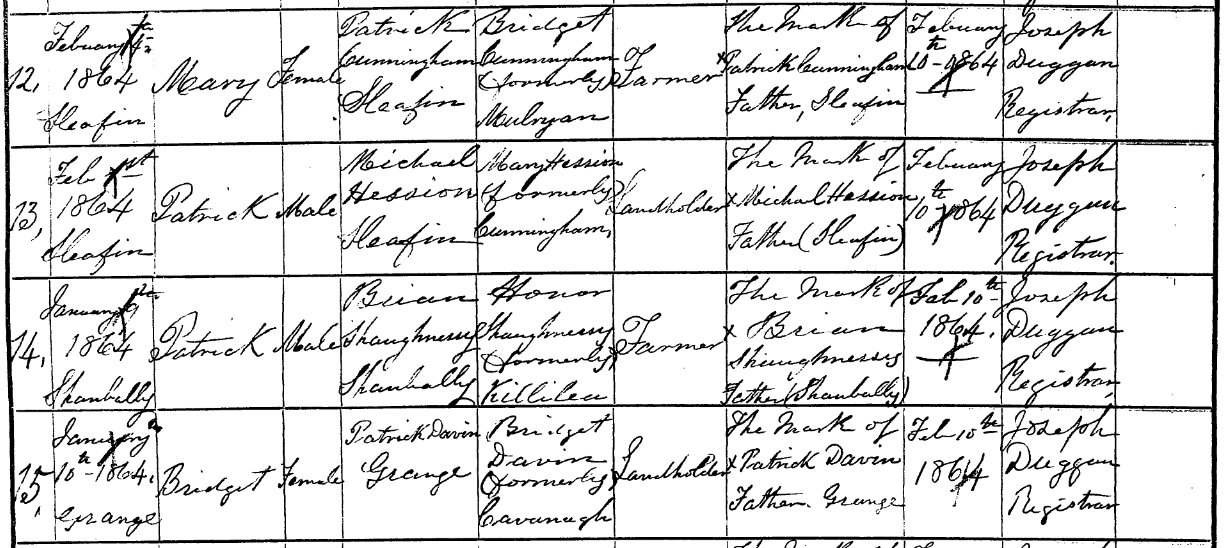A short audio interview with Mary Newell (née Flanagan) by Evelyn Stevens, about the Cahermorri-Glenrevagh Group Water Scheme and the photo of the official opening in 1973.
Photo & Interview: Cahermorris-Glenrevagh Group Water Scheme


A short audio interview with Mary Newell (née Flanagan) by Evelyn Stevens, about the Cahermorri-Glenrevagh Group Water Scheme and the photo of the official opening in 1973.
Our Winter 2023 newsletter can be viewed or downloaded at the link below. Limited print copies are available in local outlets for a few weeks after publication.
Deaths registered in the Annaghdown townlands of Headford Registration District between 1871 and 1901.

A listing of deaths registered in the townlands of Annaghdown parish within the Turloughmore registration district. Information recorded is date, townland, name, sex, marital status, age, occupation, cause of death, medical attendant. Links are provided to the register image from the General Register Office.
The below records are from a register of marriages in each deanery of the Archdiocese of Tuam, 1821-1829. Marriages in the parish of Annaghdown are recorded by the Rev. Messrs Hargadon, parish priest and curate, who were uncle and nephew.
Annaghdown Heritage Society has recently installed a Spitfire conference webcam and a 50 inch TV monitor. This state of the art audio-visual equipment will facilitate the participation of our overseas and distant domestic members during Society lectures and meetings. The
Our Summer 2023 newsletter can be viewed or downloaded at the link below. Limited print copies are available in local outlets for a few weeks after publication.

John Murphy or Seán Ó Murchú is a native Irish speaker from the parish of Annaghdown. In Addergoole village where he was raised there were many people who spoke mainly Irish, including his mother and uncle, and his father also learned to speak Irish. The Irish on this recording is the version of the language spoken in this area. John’s writing is in the old Irish script, an Cló Gaelach, and his spelling is the pre-standardised form. The notes were written by John in the late 1970s or early 1980s. This video was recorded on 22 July and 8 August 2022. Included below is an account ‘Séasúir na Nodlag le Linn mo Oige-se’ (the Christmas season in my youth), written by John in the old style Cló Gaelach script.

Between 1720 and 1925, many local loan associations operated throughout Ireland, offering small loans to the ‘industrious poor’, for purposes such as buying grain, farm animals, or machinery. A scheme on the Kirwan estate at Castlehacket operated from the 1830s to the 1850s, which resulted in an excellent set of surviving records. A return of the state of the scheme in December 1853 is particularly interesting. It offers an insight into local conditions before and during the Famine, and records several inhabitants of the townlands of Bunatober, Cahermorris, Cluidrevagh, and Biggera, who died or emigrated during this period, as well as recording the progress of each person who took out a loan.

Our Winter 2021 newsletter can be viewed or downloaded at the link below. Limited print copies are available in local outlets.